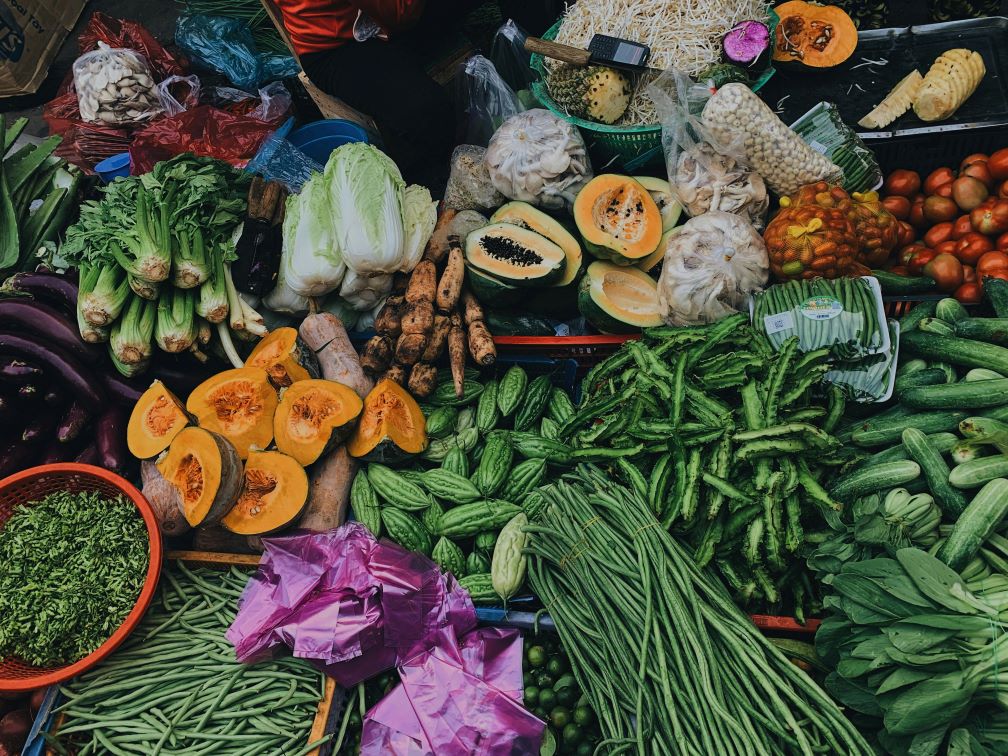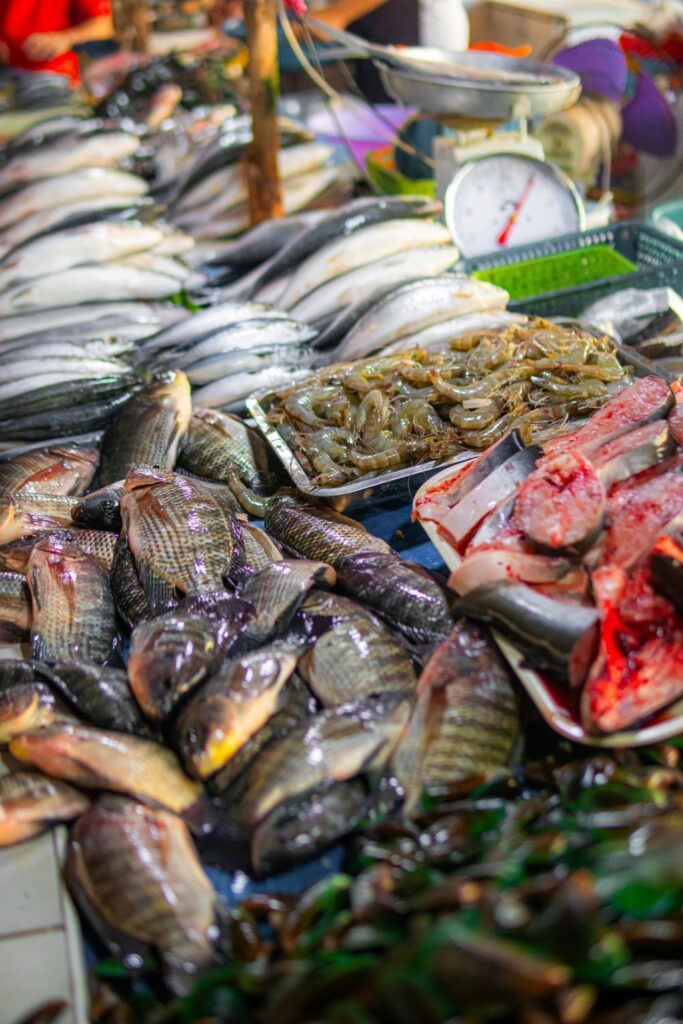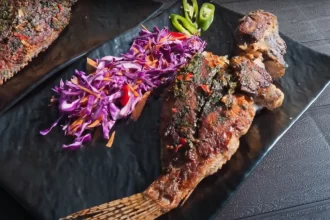Hey hey, foodies! Today, leh we jump straight into someting near to we heart and we kitchen: sustainable and eco-friendly food practices. As proud Guyanese and West Indians, we nah just love we food flavors, but we treasure we traditions and ingredients weh mek it special. Let’s tek ah look at how we can embrace sustainability without messing up de taste!
Shop Like a Boss
One ah de nice ting bout we culinary heritage is how we depend pun fresh, local ingredients. Whether we picking fresh peppah from we backyard garden or we buying fresh catch fuh we fish curry, supporting we local farmers and fishermen nah only keep we food fresh, but it also reduce abey carbon footprint.
Let’s keep dat connection to we land strong!

Embrace Seasonal Eating
As the seasons change, so do the flavors of our meals. Imagine biting into a ripe, juicy mango in the peak of summer, or enjoying hearty breadfruit chips as the air cools. Uncle Ravi knows this well; he eagerly waits for mango season to whip up his famous mango achar. Seasonal eating means fewer resources are used to grow your food, making it fresher and more flavorful. Plus, you get to enjoy the unique tastes of each season, just like we did back in Guyana.

Waste Not, Want Not
In the heart of Little Guyana, waste is a dutty word. Miss Lynette has turned the art of no-waste cooking into a delicious game. Leftover dhal transforms into a savory soup, and veggie scraps? They become rich compost for her flourishing garden. She’s a master at planning meals, using leftovers creatively, and keeping her portion sizes in check. Miss Lynette’s kitchen is proof that with a little creativity, reducing food waste can be both fun and flavorful.
Waste not, want not. Every scrap can become something beautiful!
Miss Lynette
And my Granny always seh use up every part ah de plant or animal, money na grow pun tree. From mekkin tasty soups with root vegetable peels to boiling bones fuh flavor-rich broths, we ancestors know how fuh minimize waste and maximize flavor. Let’s continue dis tradition of resourcefulness in we kitchen.
Money na grow pun tree.
Every Guyanese Parent
Sustainable Seafood Choices
Down by the coast, Fisherman John has a story to tell. He’s seen the benefits of sustainable fishing practices firsthand. By choosing MSC-certified fish, we’re not just getting tasty seafood; we’re protecting our ocean ecosystems. Think about it: a healthy seafood supply today means our grandkids can enjoy the same delicious dishes we grew up loving. It’s seafood with a side of sustainability.
The blue MSC label on fish is the Marine Stewardship Council. They certify seafood that’s caught sustainably, ensuring healthy ocean ecosystems.

Support Sustainable Farming
When you spot labels like “organic,” “fair trade,” and “regenerative,” dat mean de food produced wid respect fuh de Earth and de people who grow it. Cousin Priya always pick fair trade when she buying cocoa and sugar fuh she sweet treats. It mek she morning cup ah cocoa taste even better, knowing she choices support fair wages and sustainable practices. Sustainable farming ain’t just ah label; it’s ah promise to ah better world.
Grow Your Own
From thyme to wiri wiri peppers, she garden show how sweet it is to grow you own food. Gardening cut down on packaging and transportation, and there’s nuttin like cooking wid fresh herbs picked straight from you own plants. She homemade pepper sauce never taste fresher, and she grandkids love helping she tend to she lil green paradise.

Plant-Based Eats
You ever try ah hearty chickpea curry? If not, you in fuh ah treat. Rohan and Sita have embraced plant-based meals, making pumpkin a family favorite. Plant-based foods generally have a lower environmental impact than animal products. By exploring vegan and vegetarian recipes, they’ve added variety to their diet while doing their bit for the planet. It’s tasty, healthy, and eco-friendly—what’s not to love?
Pack It Up Right
Sandra nah lef fuh de market without she colorful reusable bags. Inspired by the vibrant markets back in Guyana, she’s turned sustainable shopping into an art. By choosing products with minimal packaging and using bulk bins, she’s drastically cut down on single-use plastic. Her stylish, eco-friendly shopping routine is not just good for the Earth; it’s also a personal statement of care and creativity.
I know all ayo get a dishwasher full with dem grocery bags.
Cut Down on Meat
Raj and Anita have turned “Meatless Mondays” into a family tradition. Each week, they experiment with new vegetarian dishes like spinach bhaji and channa masala. Reducing meat consumption lowers your carbon footprint and opens up a world of delicious, meat-free meals. It’s a flavorful way to make a positive impact, one meal at a time.
Spread the Word
The Singh family loves to host monthly get-togethers where they share sustainable recipes and tips. These gatherings are a celebration of their heritage and a commitment to a greener future. By spreading the word about sustainable food practices, they’re building a community that cares for the planet and enjoys good food together.
By weaving dese sustainable and eco-friendly practices into we daily lives, we can mek ah big difference. Let’s celebrate our rich heritage, support our local farmers, and protect the environment—all while savoring the flavors of Little Guyana. Together, we can cook up a sustainable future that’s as vibrant and diverse as our West Indian culture!








